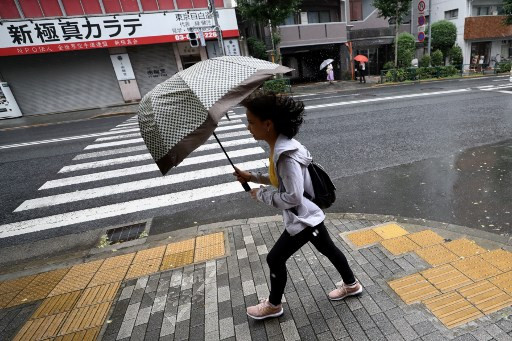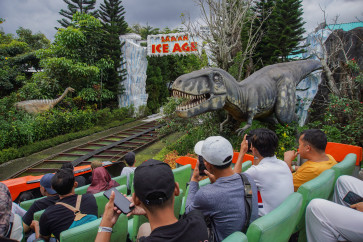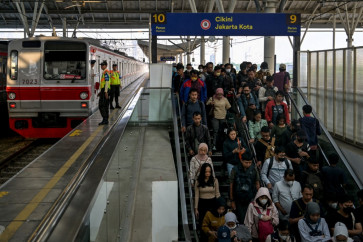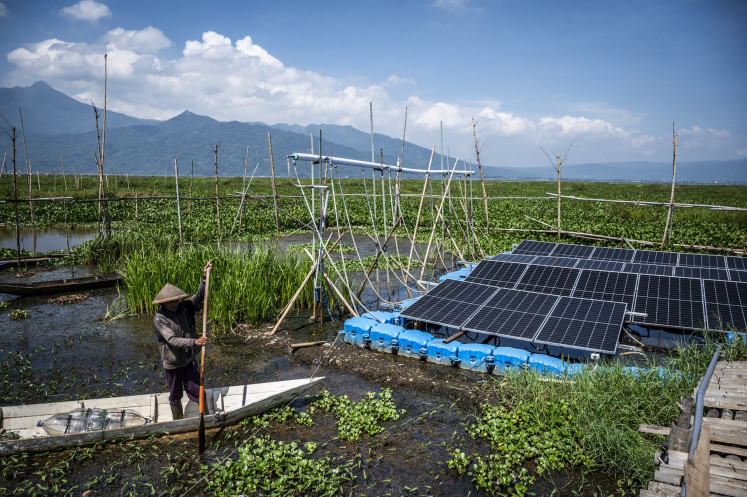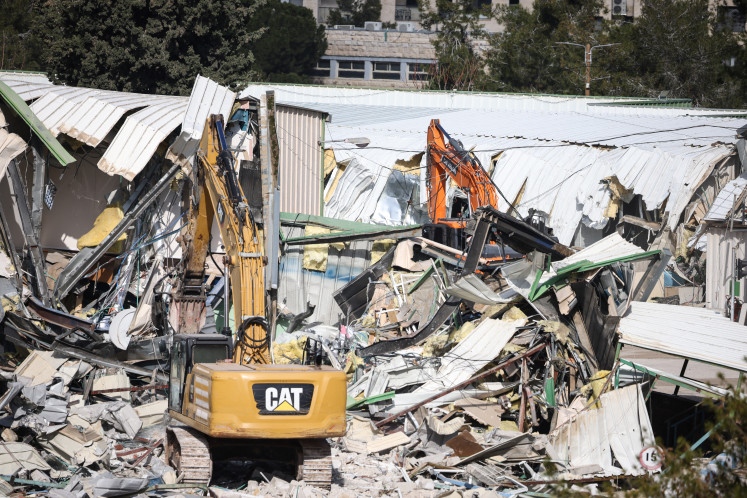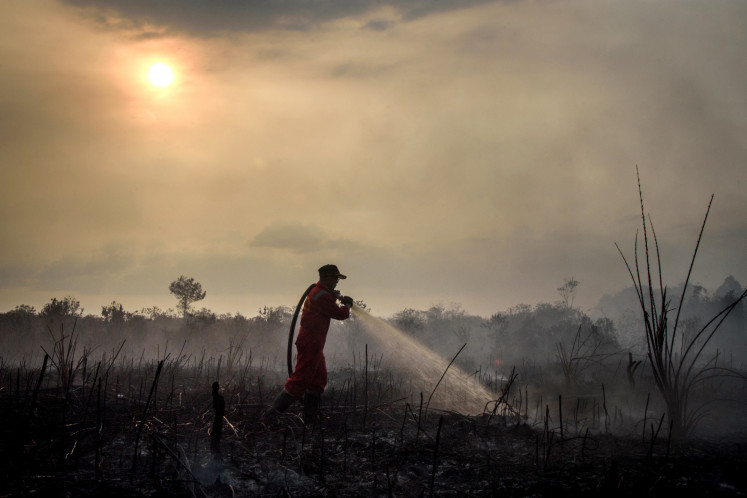Popular Reads
Top Results
Can't find what you're looking for?
View all search resultsPopular Reads
Top Results
Can't find what you're looking for?
View all search resultsTime to learn from Japan’s infrastructure development
In Japan, the first things completed in every infrastructure project are the drainage, waterways and reservoirs. Roads and bridges are always built in conjunction with large-scale waterways and are designed to be disaster-resistant.
Change text size
Gift Premium Articles
to Anyone
L
andslides and floods occur throughout the country and have claimed many victims. From the New Year flooding alone in Jakarta, Banten and West Java, the National Disaster Mitigation Agency (BNPB) has estimated losses in the hundreds of billions of rupiah.
Such disasters seem to be an annual occurrence and have shown an alarming increase in intensity. Many experts argue that we are partly to blame for “inviting” such disasters through our ineffective, though seemingly aggressive, infrastructure development agenda.
The budget of Rp 287 trillion (US$20.9 billion) dedicated last year to infrastructure development, especially roads, bridges and drainage, is said to have only met 45 percent of what is needed for development, repairs and maintenance of key infrastructure. Typically, 80 percent of the budget is earmarked for repairs, maintenance and construction of roads and bridges, minus drainage.
Unfortunately, the aggressive infrastructure development push under President Joko “Jokowi” Widodo has not overhauled the old model, with the infrastructure budget still dedicated to repairs, maintenance and the construction of roads and bridges. Only 20 percent of the national infrastructure budget is allocated specifically to building and improving drainage, which is limited to highways in big cities.
The result: roads and bridges that cost hundreds of trillions of rupiah to build every year seem to disappear in an instant, especially during the rainy season. The government should, therefore, redefine its infrastructure development strategy by building infrastructure that can adapt to various disasters, especially floods and landslides. Japan’s experience is perhaps one of the best to follow in this regard.
Although the “sakura country” is well-known as the world’s “disaster hotbed”, Japan’s so-called sustainable eco drainage allows it to withstand flooding fairly successfully. Eco drainage refers to the construction, maintenance and repair of waterways on either side of a road or bridge that are integrated with a water collection and distribution site so that the runoff does not overflow and lead to flooding in the surrounding area.
The use of eco drainage in infrastructure development and maintenance in Indonesia is very poor. Aside from the fact that infrastructure is not properly integrated with watershed development, there is also not sufficient land for massive reservoirs. Usually, drainage for road and bridge constructions is not completed until flooding occurs during heavy rainfall.
In Japan, the first things completed in every infrastructure project are the drainage, waterways and reservoirs. Roads and bridges are always built in conjunction with large-scale waterways and are designed to be disaster-resistant. The water collected in the reservoir during the rainy season can be used during the dry season. In this way, torrential rainfall can become a blessing. Such development strategies have also long been implemented in European countries.
The construction and improvement of drainage also increases the strength of roads and bridges, which are built with several layers to form a very strong concrete system.
In various areas of Japan, eco drainage infrastructure is connected to centralized reservoirs. In Beppu, 82,000 drainage sources are integrated with giant water reservoirs that are used as a source of micro hydro electricity.
In Oita Ken, eco drainage provides water for inland fish farms that span 600 hectares and reach depths of 500 meters, such as in Miyazaki. In Beppu, rainfall that previously caused floods and landslides is now drained away from main roads into an export-scale inland fish farm. Likewise, in Fukuoka, rainwater from the area’s abundant drainage channels is used to irrigate farms and is also very profitable for a mineral water business.
In October last year, eastern Japan was hit by a powerful typhoon, floods and mudslides that led to the deaths of 10 people and left at least four missing. The catastrophic floodwaters reportedly flowed easily into huge reservoirs.
Through the development of infrastructure that is integrated with drainage and the large reservoirs, Japan is often able to avoid the worst impacts of floods and landslides, arguably saving many lives and preventing massive damage to public facilities. However, unprecedented rainfall and a lack of hazard area maps were among the factors blamed for the 2018 floods that almost killed 200 in Japan.
Infrastructure development in Indonesia typically sees roads and public facilities easily destroyed shortly after they are completed, whereas in Japan, infrastructure has an average lifespan of more than 30 years. Therefore, road and bridge projects must be integrated with infrastructure to collect, contain and channel water in order to mitigate disasters and save lives and assets.
***
Member of the infrastructure supervision team of the Banyumas regency administration, Central Java, and alumni of Ritsumeikan Asia Pacific University, Japan. The views expressed are his own.

